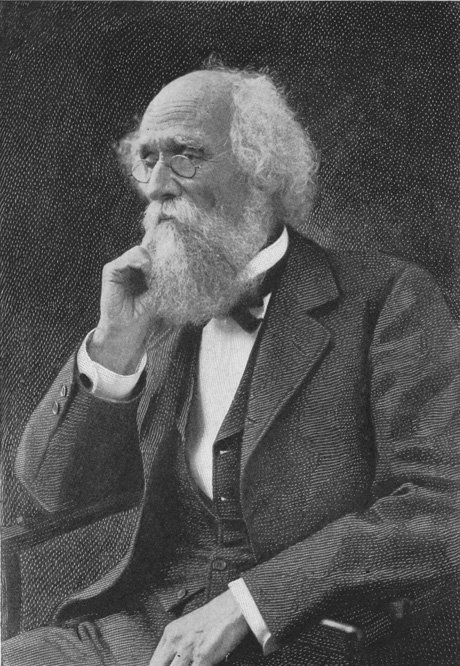 Joseph LeConte was an early member of the Sierra Club and served on its board of directors from 1892-1898. After his sudden death in Yosemite on the eve of the first Sierra Club High Trip in 1901, the Club chose to remember him by building LeConte Memorial Lodge. His son, Joseph Nisbet LeConte (“Little Joe”), succeeded him as a board member, served as president of the Sierra Club for two years (following the death of John Muir in 1914), and remained a board member until 1940.
Joseph LeConte was an early member of the Sierra Club and served on its board of directors from 1892-1898. After his sudden death in Yosemite on the eve of the first Sierra Club High Trip in 1901, the Club chose to remember him by building LeConte Memorial Lodge. His son, Joseph Nisbet LeConte (“Little Joe”), succeeded him as a board member, served as president of the Sierra Club for two years (following the death of John Muir in 1914), and remained a board member until 1940.
A native of Georgia, LeConte grew up on Woodmanston, a slave-holding plantation, now a historic site and botanical garden, near Savannah. He earned a medical degree at New York’s College of Physicians and Surgeons, devoting his career to the study of the physical sciences. Returning north to study with Dr. Louis Agassiz at Harvard, LeConte began his teaching career at Oglethorpe University and in December 1852, was elected to teach at the University of Georgia.
Prior to the Civil War, LeConte taught both chemistry and geology at South Carolina College. During the War, with the college closed, he worked as a chemist and Confederate officer producing medicines and supervising the niter works, manufacturing explosives. Following the war, the family's plantation fell into disrepair and no longer produced rice or cotton. Disillusioned by Reconstruction, Joseph and his brother, John, accepted positions with the newly organized University of California at Berkeley in 1869. Joseph became the university's first professor of geology, natural history, and botany. Popular and respected by his students, he held the position as professor of geology until his death. John, a physicist, served as the university’s first President.
Prolific in many disciplines, LeConte published works on geology, monocular and binocular vision, philosophy, art, evolution, and religion. He lectured on various subjects including the relation of philosophy to psychology and physiology. A member of the American Association for the Advancement of Science beginning in 1850, he was elected president in 1891. He was elected to membership in the American Philosophical Society in 1873 and to the National Academy of Sciences less than a year later.
LeConte visited the Sierra Nevada and Yosemite in 1870 with a group of 10 students from the University of California — the “University Excursion Party” — chronicled in his book A Journal of Ramblings Through the High Sierra, published in 1875. Impressed by Yosemite, he wrote: “I have heard and read much about this wonderful valley, but I can truly say I have never imagined the grandeur of the reality.” John Muir joined the “Excursion Party” and later commented that LeConte would talk “on the lessons of the day, blending art, science, and philosophy with whatever we had seen. Any one of us, by asking a question on no matter what subject, made his thoughts pour forth and shine like rain. . . .” About Muir, LeConte wrote,” I have formed a very high opinion of, and even a strong attachment for him.” As a respected scientist and professor, LeConte would become an advocate for Muir’s unorthodox, yet ultimately vindicated, theories about the glacial origins of Yosemite Valley.
In the 1880s and 1890s, LeConte adopted and elaborated on theories of racial inferiority that he used to rationalize the disenfranchisement and segregation of African Americans. In his writings The South Revisited (1888) and The Race Problem in the South (1892), he stated: “The South. . . . immediately before the war was completely out of sympathy with the rest of the civilized world. . . .she had only remained stationary, while the rest of the civilized world rushed on. . . .The cause of this arrest of development was, of course, the institution of slavery. Slavery had become an anomaly in the civilized world, and especially in the democratic republic like our own. …In short, southerners had not kept pace with the process of evolutionary development.” “Slavery,” according to LeConte, “is now dead. There is not a ghost of it remaining in the imagination or heart of the Southern people of today.” He went on to state that “race repulsion and race antagonism is not a wholly irrational sentiment. It is an instinct necessary for the preservation of the purity of the blood of the higher race,” [and a] “necessity at present and until some better line be drawn between the capables and the incapable.”
When LeConte’s racial theories came to light in 2015, the Sierra Club Board of Directors decided that to have a public education center named in honor of a man who promoted theories about the inferiority of nonwhite races was counter both to the Sierra Club’s values and to the need to promote inclusivity in our national parks. For that reason, the Sierra Club requested that the National Park Service rename the lodge, which is now called the “Yosemite Conservation Heritage Center.”